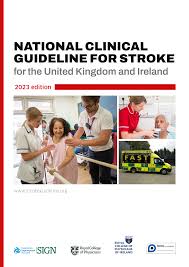Regional compliance with the National Stroke Clinical Guideline report available

An updated guideline was published last year and it was agreed we would audit the compliance of all stroke inpatient and community teams with applicable recommendations. A huge thank you to everyone who responded to our call for data – it was a mammoth task to enter and also collate the information. However, as a result of everyone’s Herculean efforts we have a full dataset and have now reported the findings – no other region has undertaken such a comprehensive review. You can download a redacted version of the report on our website page.
The information helps us benchmark the our stroke services across the care pathway. It also identifies recommendations with poor compliance by teams and highlights where work needs to be focused to collectively improve the consistency and quality of services. Teams are also able to review their own compliance to inform local improvement plans.
the care pathway. It also identifies recommendations with poor compliance by teams and highlights where work needs to be focused to collectively improve the consistency and quality of services. Teams are also able to review their own compliance to inform local improvement plans.
Overall, 19% of all 21 teams (8 stroke units; 13 Community Stroke Teams (CST)) fully complied with at least 85% of applicable recommendations. 29% were able to comply 75-84% of recommendations, with just over half of teams complying fully with 74% or less. Stroke units fared better than CSTs, and Hyper Acute Stroke Units (HASU) did better than District Stroke Centres (DSC). Compliance can depend on a range of factors, with lack of equity in funding across CSTs a significant issue. All of our teams fully or partially meet the vast majority of applicable recommendations.
Key findings were:
- Stroke units have greater full compliance than CSTs in Section 2: Organisation of stroke services – average 75% vs 46%
- Ditto Section 5: Long term support and secondary prevention – average 86% vs 68%
- Similar full compliance levels between inpatient and community services for Section 4: Rehabilitation and recovery – around 74%
- HASUs have greater compliance than DSCs for Section 3: Acute care – average 93% vs 81%
We will be discussing the findings in appropriate forums coming up to identify areas of poorer compliance we can focus on. We have also shared at meetings within the Integrated Care Board to ensure the system is aware of the strength of our stroke services, and where we may need support to improve.
